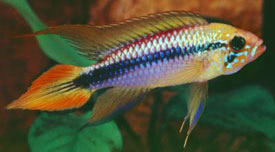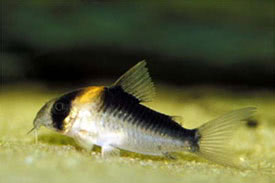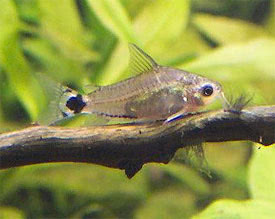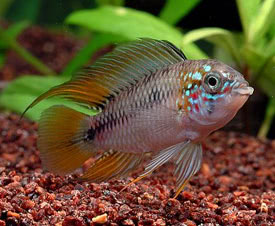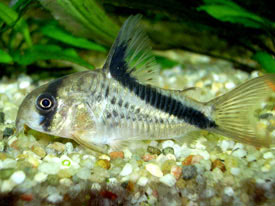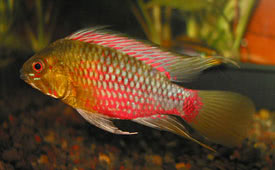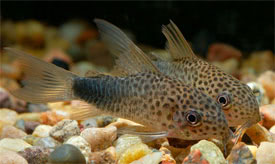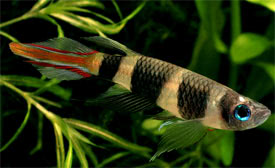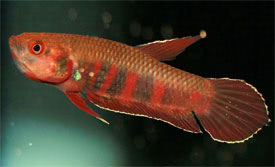
 Magyarul / Hungarian
Magyarul / Hungarian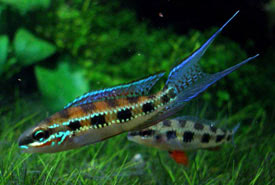
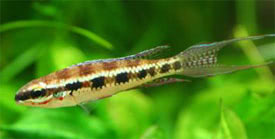
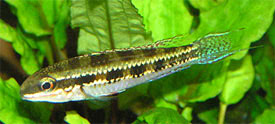

- Scientific name: Dicrossus filamentosus
- Synonyms:Dicrossus filamentosa, Cremocara filamentosus, Crenicara filamentosa
- Common name: Chessboard Cichlid
- Group: Cichlids
- Habitat: South America, Rio Negro; Orinoco
- Size: Male: 9 cm, female: 6 cm
- Biotope: Slow-moving rivers and streams
- Social behavior: Territorial and peaceful somewhat aggressive during the spawning. The species will not burrow or harm plants.
- Diet: Carnivorous, give them only live foods; Keep well supplied with brine shrimp. Feed flakes rarely. Only small live food is accepted by wild caught fish.
- Breeding: Quite easy
- Tank: Minimum 75 litres.
- Population: 1 pair for 80 litres
- Decoration: Needs a heavily planted tank with a bottom of fine sand. Add flat stones and places to hide. The fish is timid when kept alone and should be combined with several live-bearers or Characins.
- Temperature: 22-26°C
- pH: 5-6,75
- Hardness: 2-15 NK°
- Lifespan: 5 years
Description: Rarely seen in the hobby, the few available fish are usually wild-caught. Its social habits are similar to those of Apistogramma though the species controls a smaller territory. A delicate species, Chessboard Cichlid requires cautious care. Full grown animals have two horizontal stripes, one iridescent blue stripe above the spots on the side, and an iridescent greeen line below those spots.
The male is substantially larger with a longer, forked caudal fin; all fins are red, blue and black. The female's fins are transparent. For breeding Recommend acid, soft water with a ph around 5.5 and 0.1-2° dGH hardness at a temperature between 26-27° C. Suggest the addition of peat. Open breeders. The fish spawn 60-120 eggs on plants or rocks. A sandy soil is required, in which the mother will create ditches to place the fry in after they hatched. The female guards the larvae and fry. It's best to remove the male after spawning. When breeding, the females pelvic fins turn bright red, which serves as a beacon to the fry, who will respond to it. The fish is very susceptible to bad water conditions. Fungus will develop on the eggs if the water is not sufficiently soft.

















